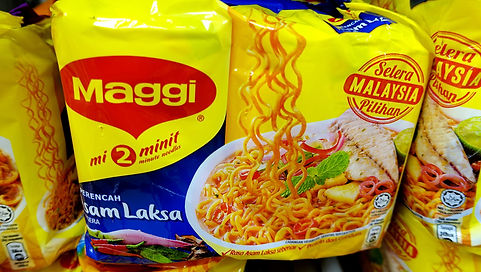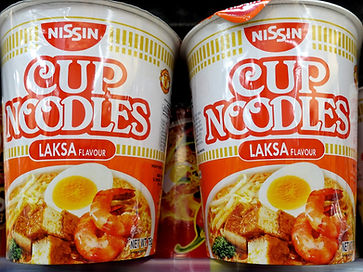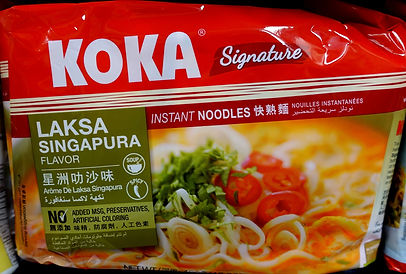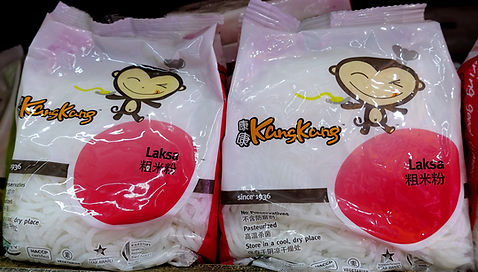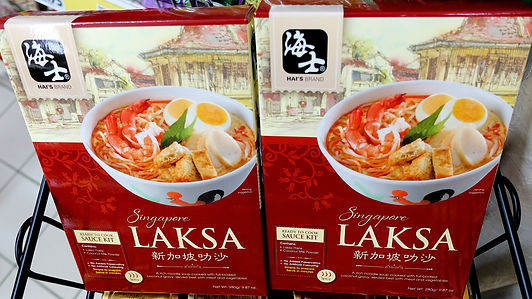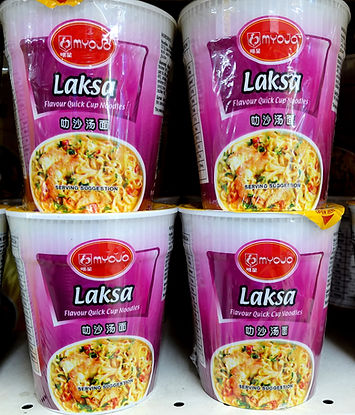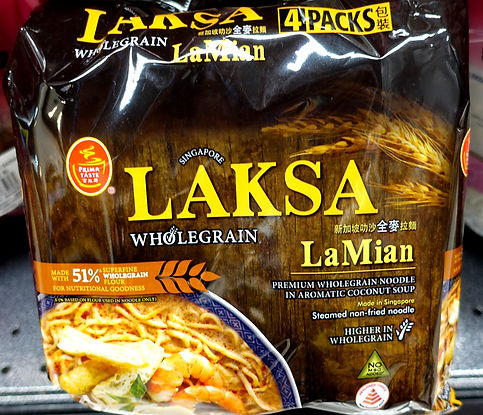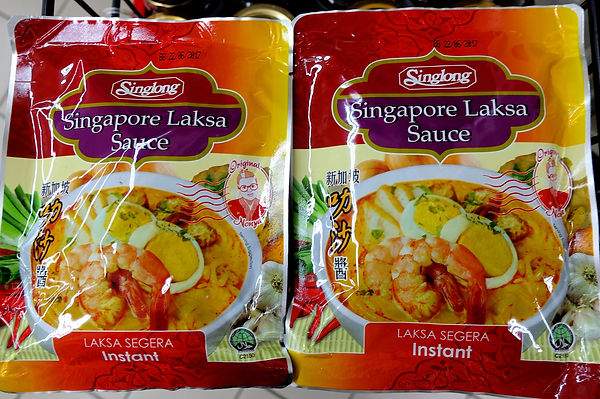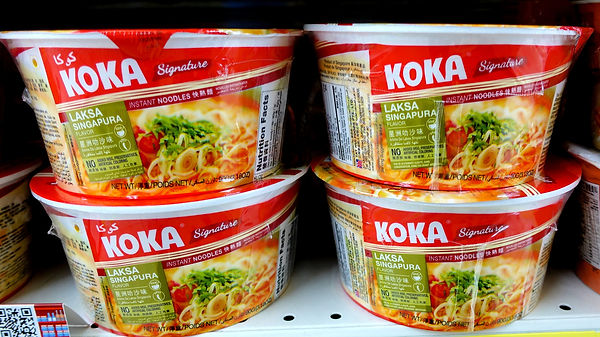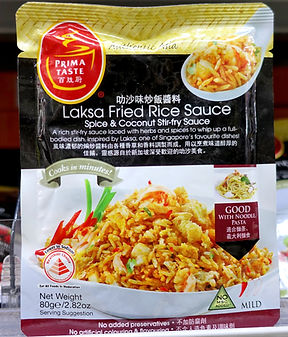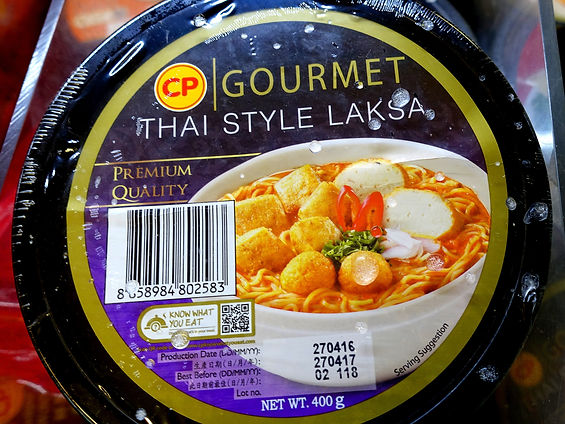Laksa
A personal account by Kenneth Lyen
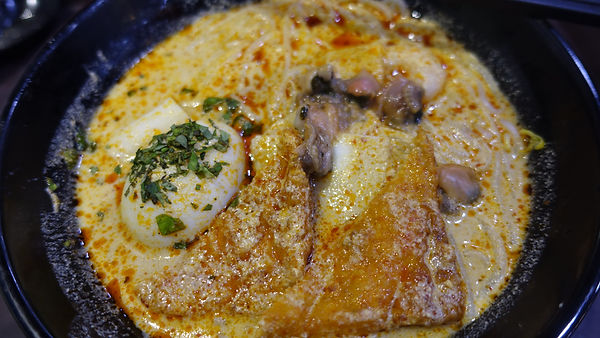
Laksa is very popular especially in Southeast Asia. Over the years my burning desire for it has not extinguished, even though I cannot stomach spicy hot foods. I am generally not a foodie, and will not go out of my way just to sample a highly recommended stall unless I happened to be there by accident. By chance, I have tried two famous Katong laksa stalls claiming to be the original Katong laksa. I have tried several other cheap laksa hawker stalls in other areas of Singapore, costing less than $5. But I accepted my friend’s invitation to the Mandarin Hotel Chatterbox lobster laksa which costs an exorbitant $36++. Wow, this laksa is damn shiok! Luckily I was not paying.
There are many varieties of laksa, but the common denominator is rice noodle engulfed in spicy hot soup which is based either on curry coconut milk, or in the case of asam laksa, is based on sour fish soup. Regional variations of laksa compound the difficulty in defining which is the real McCoy, the gold standard, the archetype. In 2009, the Malaysian Minister of Tourism tried to claim that laksa originated in Malaysia. Of course Singapore would not stand for this, nor Indonesia or Thailand, each claiming to be the originator of laksa.
There seems to be some agreement that laksa is a Peranakan recipe. Historically, most Peranakans originated from China. Owing to economic hardships from the 15th century onwards, many Chinese emigrated and settled in Malaya, Indonesia, Thailand, and other Southeast Asian countries. While some may have intermarried with the locals, quite a number returned to China to find brides. According to Wikipedia, Intermarriage in Malaya and Indonesia probably occurred more frequently between Peranakan and people of Indian Chitty and Serani ethnicity, rather than with Malays, who were mainly Muslims. Endogamous religious laws required non-Muslims intending to marry Malay-Muslims first to convert to Islam, which the Peranakans were not always willing to accept.
Are there any etymological clues about laksa’s inception? Supporting the idea that laksa may have arisen when the Chinese intermarried with the Indians living in Malaya or Indonesia during the Majapahit era which lasted until the 15th century, is the Hindi word "lakhsha", which is in turn derived from Sanskrit "laksh" (Devanagari: लक्ष) meaning "one hundred thousand" (lakh), referring to the vermicelli noodles used in the dish.
An alternative suggestion is that "laksa" may have come from the Chinese word 辣沙 (Cantonese: [làːt.sáː]), meaning "spicy sand" due to the ground dried prawns which gives a sandy or gritty texture to the sauce. The Hokkien word “dirty” sounds a bit like laksa, but I find this is harder to explain. In Thailand, laksa is known as Laso (Thai: ละซอ).
In keeping with the Peranakan hypothesis, it is easy to speculate that the Chinese brought noodles with them, hitherto unknown in Southeast Asia. It was merged with the hot spicy herbs and coconuts used for cooking by indigenous Southeast Asian peoples, and this resulted in laksa!
There are regional differences in the taste of laksa. The further north you go, like Penang and Thailand, the laksa is known as asam laksa, and is more sour, as it uses sour fish soup. Further south, like Malacca and Singapore, the laksa uses thick chicken and coconut curry soup. It is impossible to say whether laksa originated further north or down south. Both versions are good.
Recently I stumbled upon instant laksa in several Singapore supermarkets. It brought back fond memories of my overseas student days when I survived on instant noodles. I was astounded by the number of companies producing instant laksa. Looking through some YouTube videos, I realize that making laksa is not an easy undertaking. There are numerous ingredients which take considerable effort and time to assemble. As an overseas student I learnt to lower my standards, and just an approximate reminder of home food was sufficient to satisfy me. I could imagine all the busy students and young workers buying these packets of instant laksa, perhaps for a midnight snack.
Just yesterday I was at PS Café in Paragon Shopping Centre and I ordered Laksa Pesto Spaghettini, which turned out to be a fusion of Italian Spaghetti and an interesting curry laksa soup. It looks like the current trend of fusion foods where East and West merge their tastes and textures is taking place even for laksa. I am watching the evolution of laksa with amusement. As Darwin declared, it is survival of the fittest. Wouldn’t you like to order Italian laksa in an Italian restaurant, or Japanese laksa ramen in a Japanese restaurant? Actually they have already beaten me to it. You can get Spaghetti alla Laksa Pesto in north Italy, and you can get Laksa Ramen in Suntec City!
Good grief!
Kenneth Lyen
28 November 2016
References
http://eresources.nlb.gov.sg/infopedia/articles/SIP_884_2004-12-27.html
https://en.wikipedia.org/wiki/Laksa
https://www.youtube.com/watch?v=GsHyVECTvZ8
https://www.youtube.com/watch?v=DOfia0O4qbk


